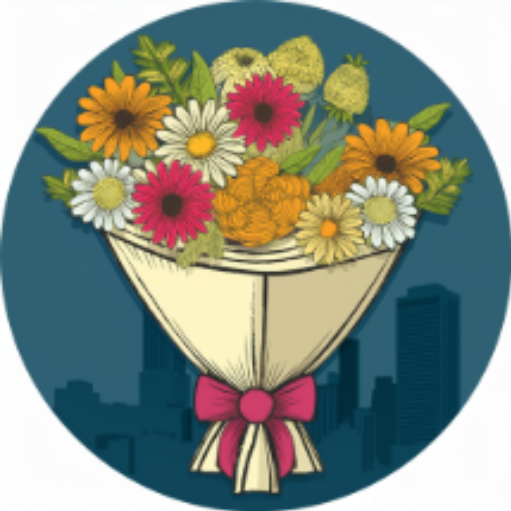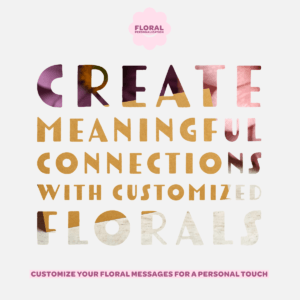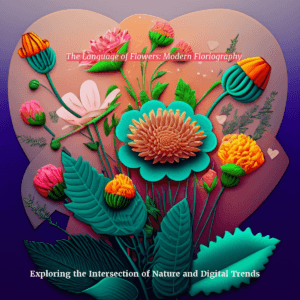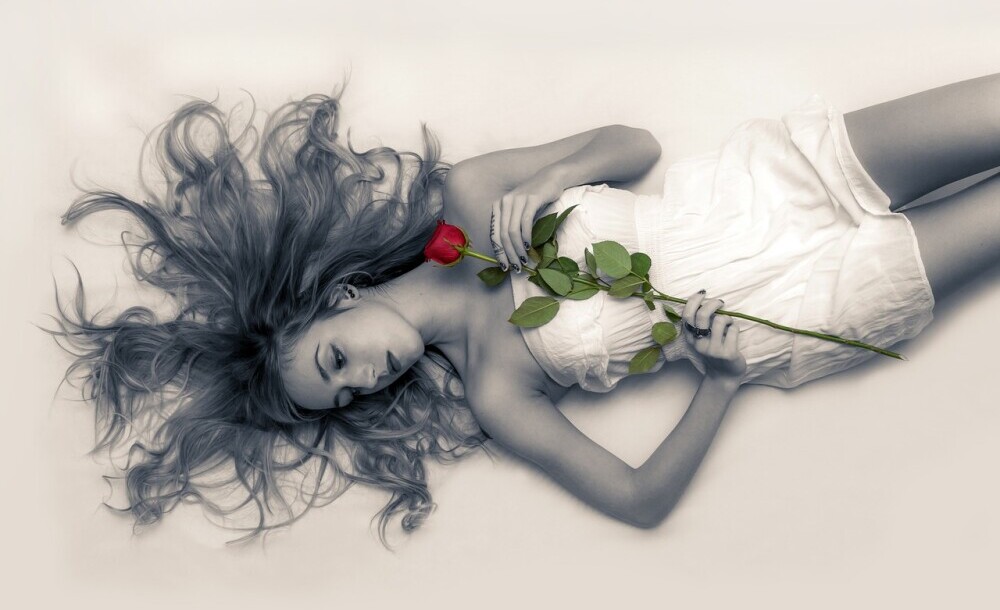
The History Behind Flower Symbolism
Flower symbolism has roots stretching way back into the annals of history. I bet you didn’t guess that even ancient folks were assigning meanings to flowers. From Egyptians and Greeks to the Romans, everyone seemed to love a bit of floral flair beyond just the pretty looks.
In ancient Egypt, flowers were part of the religious and burial ceremonies, often linked to deities and afterlife offerings. The Greeks, on the other hand, had a legendary affinity with laurel wreaths, which became eternal symbols of victory and honor. These stories show how tightly integrated flowers were into the very fabric of life.
Then came the Romans, who weren’t shy about their floral displays at celebrations, with roses tossed around like confetti. Their appreciation extended into the gardens and villas, bringing nature’s splendor into daily life, blending beauty with prosperity and exuberance.
Across the world, other civilizations were catching onto this floral allure too. Over in Asia, flowers like the lotus carried deep spiritual symbolism, representing purity and enlightenment. Across different cultures, flower meanings likely evolved from practical uses, such as in medicinal practices, to represent deeper philosophical concepts.
Packed with so much insight into the human psyche, it’s no wonder flowers came to embody an array of emotions and events throughout history. These symbolic meanings have been beautifully preserved and adapted over time, further enriched by stories and traditions handed down through the generations.
Across Cultures and Continents – A Global Perspective
Flower symbolism didn’t just start and stop within one small region. Nah, it crisscrossed continents, shaping its unique identity in every nook and cranny. People everywhere found their culture’s spirit reflected in local blooms.
Asian cultures, for instance, hold deep admiration for flowers like cherry blossoms. Japan’s Hanami celebrations, focusing on cherry blossoms, highlight these delicate petals’ fleeting beauty and life’s impermanence. In China, peonies are synonymous with wealth and honor – pretty posh for something that grows in the backyard, right?
Over in Europe, different flowers tell different tales. Like in English folklore, where bluebells are called “fairy thimbles” and are often seen as magical. Tulips in the Netherlands? They sparked “Tulip Mania” in the 17th century, showing just how a simple bulb could become a symbol of undying love and prosperity.
Traveling down south, you’ll find marigolds in Mexico, especially during the Dia de los Muertos. They guide spirits back to the world of the living, underscoring their powerful traditional and spiritual ties.
In the grand tapestry of world history, trade and migration were seasoned with a sprinkle of floral exchange too. Merchant routes carried new flower varieties, coloring the gardens and symbolisms of new lands with exotic brightness.
It’s fascinating how such natural simplicity weaves into the intricate cultural tapestries from east to west, north to south. Despite the vast diversity, one constant remains: flowers speak a language that everyone understands, beyond borders and time.
Floral Language of Love – Roses and Their Resplendent Romance
Ah, roses. They don’t just smell divine; they are the stuff of timeless romance. Right from the get-go, roses have been the heart’s best pal, speaking volumes without uttering a word.
In the realm of love and passion, roses are the true OGs – Original Gentlemen, if you will. Red ones? They’re the universal sign of ‘I love you.’ It’s like roses have been caught up in a whirlwind romance with humanity, immortalized in poetry, art, and every Valentine’s Day postcard you’ve ever seen.
Famous poets like Shakespeare and plays from the Greek era often revolve around roses, painting vivid scenes of love, loss, and longing. And who could forget the tales of Cleopatra filling her room with rose petals for Marc Antony? That’s a bold romantic gesture that set the bar sky-high in ancient romantic lore.
Beyond the classic red, roses come with a palette of meanings. White for purity, yellow for friendship, pink for admiration, and even black roses carry a mysterious allure. Every shade whispers a different story, adding layers to endless conversations about emotions and intentions.
Understanding these color cues can save you from a bouquet blunder. After all, you wouldn’t want to send a yellow rose when you’re keen on something way more than friendship! Learning this floral language isn’t just about avoiding faux pas. It’s about enhancing communication, letting these blossoms bridge what words sometimes can’t convey.
Mystical Meanings – The Spiritual and Religious Role of Flowers
Flowers have always had a foot in the spiritual realm, acting as more than just eye candy. They offer a special link between earthly existence and higher powers, playing significant roles in religious and spiritual rituals across the globe.
Take the lotus flower, for example. Revered in both Hinduism and Buddhism, it’s seen as a symbol of purity, rising unstained from the muck to bloom beautifully, reflecting spiritual enlightenment. There’s a reason you see it on more than a few meditation posters and yoga studio walls.
In Christianity, the lily is a trusted symbol around Easter, signifying resurrection and purity. It’s got an air of peace and reverence, showing that sometimes, a flower’s worth is way deeper than just its floral fragrance.
And then there’s the incense flowers used in ceremonies from Asia to the Middle East. These blooms do double duty, serving as fragrant offerings and sacred symbols.
In myths and legends, flowers feature prominently too. Take Narcissus from Greek mythology, who was transformed into a flower for his vanity, highlighting the deeper messages humans have woven around these natural wonders.
Whether it’s in the physical form of offerings at altars or symbolically in spiritual tales, flowers hold a potent place. They’re not just nurture’s adornment; they are woven into the very fabric of our quest for meaning, growth, and transcendence.
Victorian Floriography – Communicating through Petals
In the Victorian era, expressing emotions openly wasn’t the norm, so people turned to flowers as their secret communicators. Flower arrangements became coded messages, letting people spill their hearts without saying a word.
Floriography, the art of communicating through flowers, became quite a sophisticated skill. Armed with a bouquet, folks would send discreet yet powerful notes of love, jealousy, friendship, or rebuff.
Red roses spoke of passionate love, while yellow might hint at friendship or even jealousy. Daisies for innocence or geraniums for foolishness – the possibilities were endless, adding layers of nuance to every blossom.
This silent language caught on like wildfire, becoming a social tool at gatherings and balls. People would consult floral dictionaries to make sure their bouquet was sending just the right vibe.
These floral codes were more than just whims – they were a lifeline for people yearning to connect in a society with strict social norms. They remind us how flowers transcend oral language, catching whispers of the heart that words sometimes fumble with.
Modern Interpretations – Flowers in Contemporary Culture
Flowers aren’t just stuck in the pages of ancient history; they’re blooming in our modern lives, painting culture in vibrant hues. From social media to street art, these natural beauties are making quite the contemporary splash.
In pop culture, flowers pop up in everything from album art to blockbuster movies, often symbolizing themes like rebirth, beauty, and even destruction. Take sunflowers, for example. They blossom in films and music videos to symbolize loyalty and adoration – think of the enduring image of sunflowers in a field, facing the sunlight.
The environmental movement has given flowers fresh meaning too. Flowers have become symbols of eco-consciousness, representing the fragility and beauty of nature that advocates strive to protect. Planting a wildflower garden or gifting seed papers has become a tangible way to promote sustainability.
In the world of fashion, floral designs are an evergreen trend, reimagined each season in bold prints and soft motifs. Urban areas, from New York to Seoul, showcase intricate floral graffiti and murals. These living artworks crop up as community messages of hope, vitality, and resistance.
Modern art installations use flowers to evoke emotions and thoughts. Sometimes ephemeral, these pieces often challenge us to consider life’s fleeting beauty and the cycle of nature.
Flowers reflect our current cultural landscape by integrating with technology and media while still offering a connection to nature. They’re a reminder that, no matter how digital our lives become, there’s an intrinsic draw to the natural narratives brought to life by flowers.
The Science Behind the Sentiment – Biological Significance
Flowers do more than just sit pretty in a vase; they’re wired by nature with some fascinating scientific mojo. Their colors, scents, and structures have evolved to play crucial roles in their survival game, captivating not just humans, but pollinators too.
Let’s talk about those bright, popping colors. They’re all about attracting attention from pollinators. Birds, bees, and even bats get lured in to help flowers transition from buds to fruit. The vibrant hues? They’re practically nature’s billboards saying, ‘Hey, come here!’
The scent of a flower isn’t just for us to swoon over. It’s a complex blend of chemicals designed to attract and guide their pollination partners. Different pollinators have varying scent preferences. So flowers get super niche, tailoring their aromatic notes to the olfactory tastes of their chosen crowd.
The structure of a flower also holds a story. Through natural selection, petals became adapted to maximize their appeal, ensuring that the DNA keeps flowing. Orchids, for example, often mirror insect shapes, tricking pollinators into landing on blossoms and unwittingly helping with their reproductive missions.
From the human perspective, research digs into why flowers have such a profound emotional impact on us. Studies suggest that flowers can enhance mood and even promote healing. Their presence is often linked with reduced stress levels, making them a staple in therapeutic environments.
So, while a flower might seem like just a pretty face, remember its bloom is backed by a complex web of nature’s designs, illustrating intricate evolutionary strategies that contribute to both ecological roles and human well-being.
Blooming in Business – Economic and Commercial Symbolism
Flowers aren’t only romantic gestures. They’re big business, woven into the economy as symbols of celebration, love, and even apology. Floral industries drive significant markets, from local farmers to international exporters.
Think about weddings, birthdays, Valentine’s Day, Mother’s Day – none would feel complete without a splash of floral delight. This demand creates a thriving industry, especially in countries known for flower cultivation like the Netherlands, Kenya, and Colombia.
Sustainability is shaking up the floral supply chain. Consumers want ethically sourced blooms, pushing florists and growers towards environmentally friendly practices.
Moreover, flowers infuse their symbolism into branding strategies. Companies leverage the symbolic meanings of flowers to enhance their images – using roses to evoke passion, or lilies for serenity in cosmetics and perfumes.
Beyond traditional events, flowers have a starring role in digital spaces. Online flower delivery services let you send a floral message across the globe with just a click. This digital pivot broadens access, allowing even the smallest businesses to bloom on a global stage.
At major events, floral displays often steal the show, combining aesthetic appeal with deeper messages. Cities might spend thousands on displays that draw tourists, enhancing local economies while delighting visitors with colorful grandeur.
In essence, flowers are a currency: trading in emotions, meanings, and profits, they underscore the human connection to nature’s beauty while firmly anchoring themselves in everyday commerce.
Personal Petal Narratives – Personal Stories and Perspectives
Flowers hold a special spot in many people’s personal stories, etching memories with their vibrant hues and delicate scents. Whether marking joyous occasions or offering solace in times of grief, flowers are deeply embedded in personal narratives.
Take weddings, for example. Many carry tales of meticulously chosen floral arrangements meant to capture the spirit of the event and the couple’s unique connection. A beloved grandma’s favorite bloom may adorn a bouquet, weaving generational ties into a modern celebration.
On the more somber side, flowers often play roles at funerals or memorials, symbolizing not only the brevity of life but also offering comfort and remembrance. White lilies might grace a service, casting an aura of peace and purity, while marigolds radiate warmth and vivid memories in commemorations across cultures.
Personal favorites can become symbolic anchors throughout one’s life. A woman’s childhood memories of wild daisies picked during summer vacations might prompt her to plant them in her garden, rooting her present to cherished past moments.
Tattoos and personal artwork infused with floral motifs tell stories too. Each petal and thorn represents an individual’s journey, personal growth, and resilience.
Flowers are more than nature’s decorations—they’re storytellers, quietly narrating chapters of our lives through colors and fragrances. Our relationships with them are as unique as the blooms themselves, continuously unfolding and deepening with each turn of life’s page.
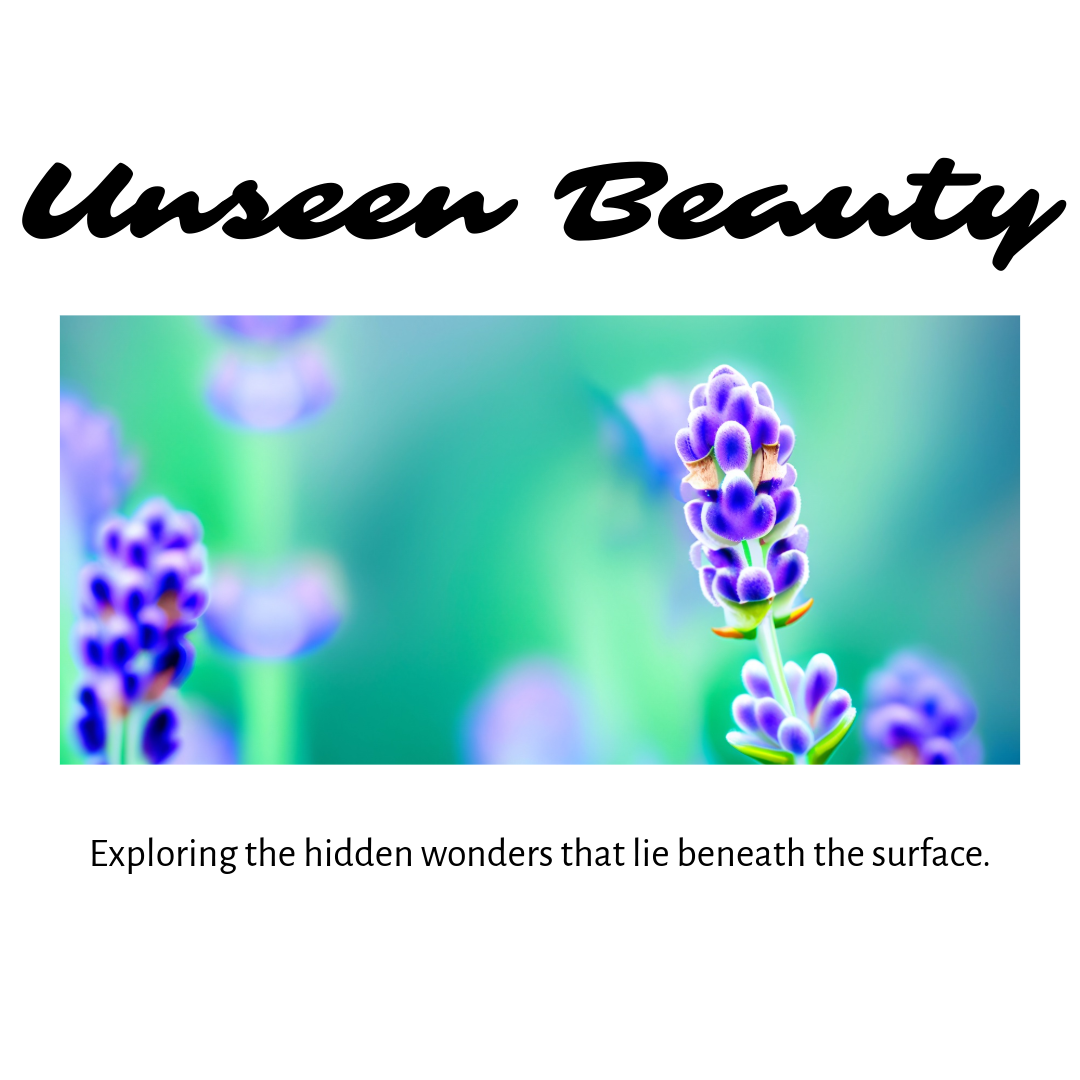
Lavender: A Deeper Look
Lavender, known for its striking color and calming fragrance, is a plant rich with history and uses. Let’s dive into its various aspects:
Origins and History
Lavender, scientifically known as Lavandula, is a genus of 47 known species of flowering plants in the mint family, Lamiaceae. It is native to the Old World and found from Cape Verde and the Canary Islands, Europe across to northern and eastern Africa, the Mediterranean, southwest Asia to southeast India.
Historically, lavender has been used for over 2,500 years. Ancient Egyptians used it in the mummification process and perfumes. Romans used it for bathing, cooking, and scenting the air. During the Middle Ages, it was used as a medicinal herb.
Cultural and Symbolic Meanings
Lavender holds various meanings across cultures. A symbol of purity, calmness, devotion, and peace, it is often used in aromatherapy and religious rituals. In the language of flowers, lavender can signify calmness, grace, and even devotion.
Different societies have their unique interpretations. For instance, in the Victorian era, lavender was often associated with love and luck. In contemporary contexts, it often symbolizes serenity and relaxation.
Fragrance and Aromatic Profile
Lavender has a distinctive fragrance that is sweet, floral, and slightly woody. The essential oils extracted from lavender flowers are widely used in perfumery, cosmetics, and aromatherapy. Its calming scent is known to help reduce stress and anxiety, promoting relaxation and restful sleep.
Medicinal Uses and Health Benefits
Lavender has been used medicinally for centuries. Its applications range from topical treatments to internal uses. Here are some health benefits and uses:
- Aromatherapy: Lavender oil is often used in diffusers to relieve stress, improve mood, and enhance relaxation. Research suggests that it can help with anxiety and depression.
- Sleep Aid: Its soothing properties make lavender a popular natural remedy for insomnia.
- Skin Care: Due to its antiseptic and anti-inflammatory properties, lavender oil can help heal minor burns, insect bites, and skin irritations.
- Pain Relief: Topical application of lavender oil may reduce inflammation and pain, particularly for conditions like muscle soreness and menstrual cramps.
- Digestive Aid: Lavender is sometimes used to alleviate small intestinal issues, such as bloating or indigestion.
Societal Differences in Use
The usage of lavender can vary significantly across different cultures:
- Europe: In France and the UK, lavender fields are a significant cultural and economic asset, with widespread use in culinary arts, cosmetics, and medicine.
- Asia: In addition to its aromatic uses, traditional medicinals often incorporate lavender extracts for holistic treatments within Ayurveda and traditional Chinese medicine.
- America: In the U.S., lavender is mainly used in aromatherapy and natural healing practices, with a growing market in organic skincare products.
Unknowns and Ongoing Research
While lavender’s benefits are widely known, ongoing research continues to explore its potential uses and effects. Some unknowns include:
- Long-term Effects: More studies are required to understand the long-term effects of lavender use, particularly with consistent essential oil exposure.
- Interactions with Medication: Researchers are still exploring how lavender interacts with various pharmaceuticals, which could be important for those on certain medications.
- Molecular Mechanisms: Scientists are interested in the exact molecular pathways lavender influences in terms of psychological and physiological effects.
Final Thoughts
Lavender remains a timeless plant, cherished for its beauty, versatility, and potent aromatic properties. Whether in a health, fragrant, or symbolic capacity, its contributions endure across both time and culture. As research progresses, who knows what other benefits and uses we might discover about this remarkable plant?
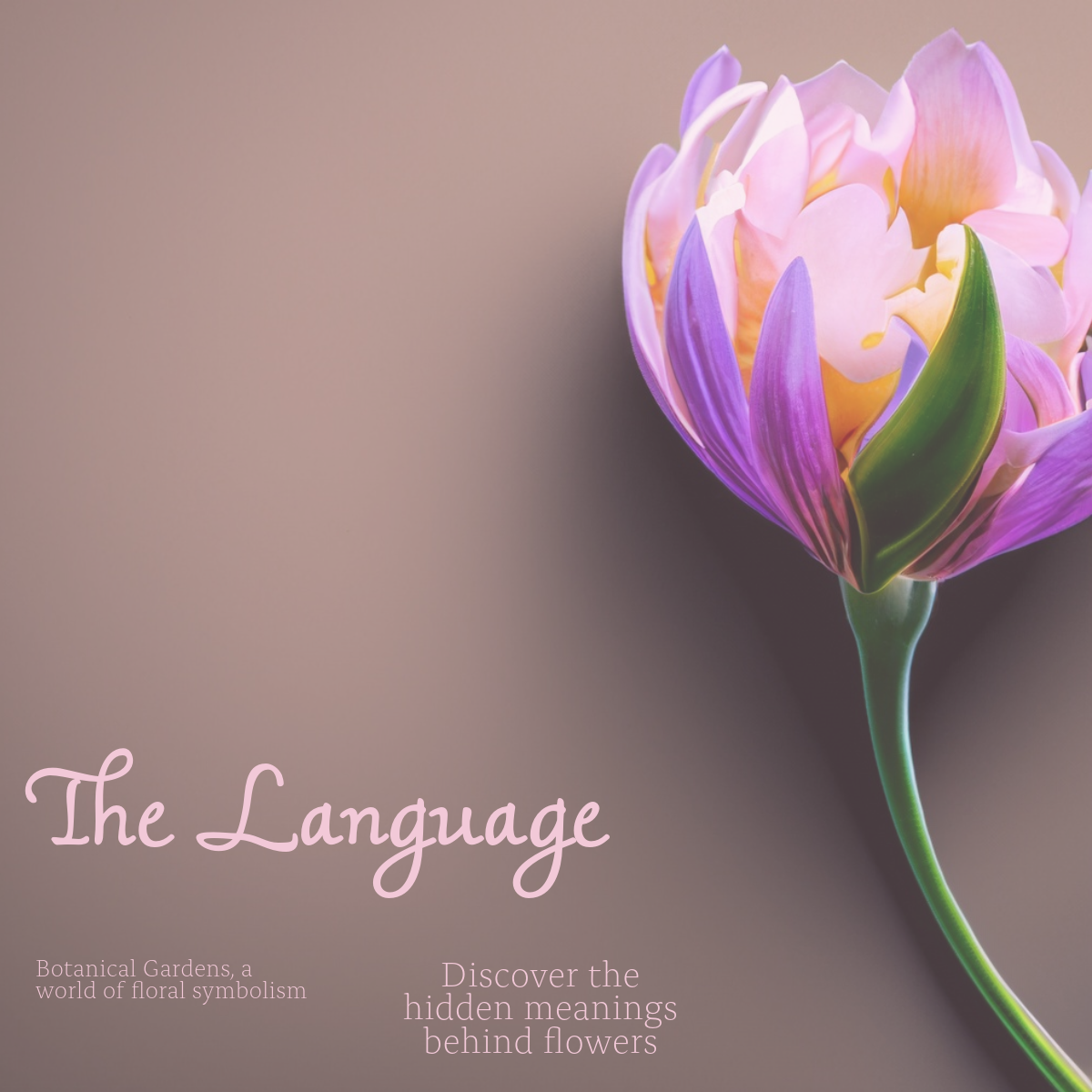
The Language Of Flowers: What They Mean
Introduction to the Language of Flowers
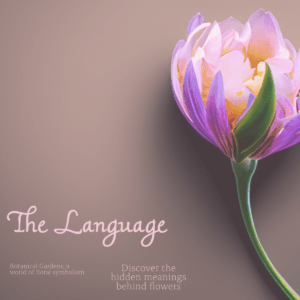
The Language of Flowers, known as floriography, is a captivating mode of communication that utilizes the beauty and symbolism of various blooms to convey emotions, sentiments, and messages. This form of expression became particularly popular during the Victorian era but has roots tracing back to ancient civilizations. Each flower carries its own significance, encouraging the sender and recipient to engage in a delicate dance of meaning without uttering a single word.
Historically, floriography flourished as it allowed individuals to communicate feelings that societal norms often stifled. In many cultures, flowers were used to express love, sympathy, celebration, or even disdain, giving rise to elaborate catalogs and guides to their meanings. For instance, a red rose often symbolizes passionate love, while a white lily conveys purity and innocence. This rich history highlights the personal and cultural narratives woven into the fabric of floral symbolism across time and space.
Globally, flowers play a substantial role in different cultures, often intertwined with their traditions, beliefs, and rituals. From the vibrant marigolds of Diwali in India to the somber chrysanthemums of All Souls’ Day in Mexico, flowers serve not only as decorative elements but also as powerful symbols that articulate life’s complexities. Their role in non-verbal communication transcends language barriers, allowing individuals to express emotions with a simple bouquet. In this way, flowers connect us, bridging gaps in understanding through their vivid colors and scents, becoming a universal language in the tapestry of human interaction.
Symbolic Meanings of Popular Flowers
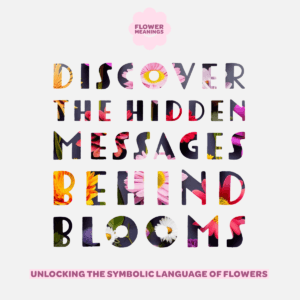
Roses have long been revered as symbols of love and passion, making them one of the most recognized flowers in various cultures. The deep red rose, in particular, embodies romantic devotion, while the varying hues of roses can convey an array of emotions. Pink roses suggest admiration and gratitude, yellow roses symbolize friendship, and white roses often represent purity and new beginnings. This rich palette of meanings is why roses hold a central place in occasions like Valentine’s Day, weddings, and anniversaries, where the language of love is expressed through blooming petals.
Lilies, known for their striking beauty and elegance, are often associated with purity and renewal. The white lily, especially, is a powerful symbol of innocence and virtue, frequently appearing in religious and spiritual contexts. In many cultures, lilies signify the arrival of spring, embodying the essence of rebirth and transformation. This makes them a popular choice for celebrations such as baptisms and weddings, where they serve as a reminder of fresh starts and the promise of new beginnings, highlighting the deeper connections between floral symbolism and life’s milestones.
On the other hand, sunflowers convey adoration and loyalty, turning their faces toward the sun and symbolizing the unwavering support and devotion of those who cherish them. Their bright, cheerful disposition makes them perfect for bringing joy and positivity into any space, encapsulating feelings of warmth and happiness. Similarly, daisies carry meanings of innocence and cheerfulness, often representing purity and childlike joy. These charming flowers remind us of the simple pleasures in life, embodying hope and positivity. Together, these popular flowers highlight the diverse range of emotions that blossoms can represent, enriching our lives with their beauty and symbolism.
Cultural Significance and Variations
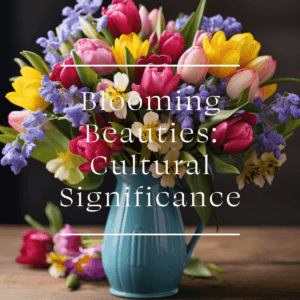
Flowers have held substantial cultural significance across the globe, with their meanings often diverging dramatically between Eastern and Western cultures. In many Eastern traditions, flowers are deeply embedded in spiritual practices and symbolism. For instance, the lotus flower is revered in Hinduism and Buddhism, symbolizing purity, enlightenment, and the cycle of rebirth as it rises beautifully from muddy waters. Conversely, in Western cultures, flowers like the rose have primarily been associated with romance and beauty, serving as gifts in matters of love and affection. The appreciation for flowers in the West is often tied to celebrations such as Valentine’s Day and Mother’s Day, highlighting the importance of flowers in expressing human emotion rather than their spiritual significance.
Folklore and mythology also play a significant role in the symbolic meanings of flowers across cultures. In various mythologies, flowers are often depicted with divine qualities or as offerings to gods and goddesses. In Greek mythology, the narcissus is linked to the story of Narcissus, symbolizing vanity and the danger of self-obsession. Similarly, in Irish folklore, the shamrock is often associated with St. Patrick and represents good luck and faith. These stories not only provide context for the flowers’ meanings but also enrich the cultural narratives surrounding their significance, weaving them into the very fabric of human experience.
However, cultural specificities and variations can lead to unique interpretations of the same flower in different regions. For instance, while white lilies might symbolize purity in many Western cultures, in some Asian cultures, they are associated with funerals and mourning. The color and context add layers of meaning, transforming the perception of the same flower. This complexity reflects the intricate ways in which flowers can serve as cultural symbols, portraying the values, beliefs, and historical experiences of varying societies around the world. By understanding these cultural differences, we can better appreciate the profound relationship between humans and the natural beauty of flowers.
Flowers in Literature and Art
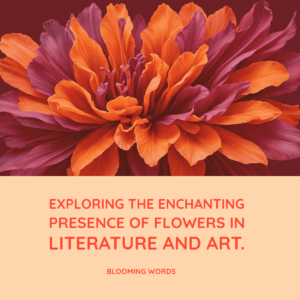
Flowers have long served as powerful symbols in literature, capturing human emotions and transcending the nature of mere aesthetics. In Shakespeare’s works, for example, flowers often convey complex feelings and thematic depth. The iconic phrase “A rose by any other name would smell as sweet” from *Romeo and Juliet* emphasizes the universal beauty of love, transcending social barriers. Similarly, in *Hamlet*, Ophelia’s gifting of flowers—each with specific meanings—provides insight into her state of mind and the tumultuous reality of the world she inhabits, creating a rich tapestry of meaning woven through floral imagery.
In the realm of visual art, flowers have inspired countless renowned masterpieces, reflecting both natural beauty and deeper symbolic interpretations. Vincent van Gogh’s *Sunflowers* series exemplifies how a simple subject can evoke vibrant emotion and individuality, as he transformed ordinary flowers into expressions of beauty and reflection of his personal struggles. Additionally, the works of Georgia O’Keeffe, with her sweeping depictions of flowers, elevate their status from commonplace to monumental, inviting viewers to contemplate their details and significance in both nature and life. These artworks illustrate how flowers can serve not just as subjects, but as profound vessels of artistic expression.
Moreover, the symbolic use of flowers in poetry and prose adds further layers of meaning to human experience. Poets like Robert Frost and Emily Dickinson employed floral imagery to explore themes of love, mortality, and the passage of time. Dickinson’s poems often feature flowers as metaphors for the fleeting nature of life and beauty, while Frost uses them to evoke the contrasting emotions found in the cycles of nature. Through these literary devices, flowers become more than mere decoration; they embody the very essence of human sentiment, transforming the way we perceive our relationship with the world and ourselves. The enduring presence of flowers in literature and art underscores their ability to articulate intricate emotions and ideas, bridging the gap between nature and human experience.
The Science Behind Floral Symbolism
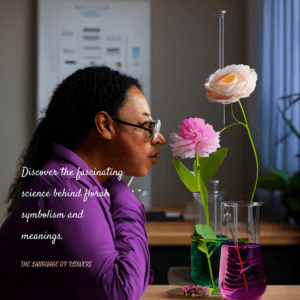
Flowers and Occasions: Choosing the Right Blooms
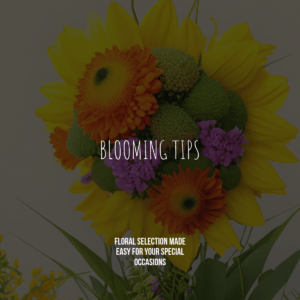
Flowers play a vital role in marking significant moments in life, and selecting the right blooms for various occasions can enhance their emotional impact. At weddings, flowers are often the centerpiece of romance and unity. Couples typically choose blooms that reflect their personalities and the theme of their celebration, with roses symbolizing passionate love, peonies representing good fortune and prosperity, and hydrangeas signifying heartfelt emotions. The choice of flowers extends beyond just aesthetics; they create a sensory experience that links the couple’s vows to the beauty of nature, making the day memorable for both the couple and their guests.
In contrast, flowers selected for funerals serve a different purpose. They are chosen to convey feelings of mourning and remembrance, honoring the deceased and providing comfort to the bereaved. Lilies, for instance, are often associated with purity and the restoration of the soul, making them a common choice. Chrysanthemums are seen as symbols of death in many cultures and are frequently used in funeral arrangements in various parts of the world. Each bloom communicates a message of love and respect, allowing mourners to express their grief and celebrate the life of the departed.
Celebratory occasions such as birthdays warrant the selection of joyful and vibrant flowers. Bright, cheerful blooms like sunflowers, tulips, and gerbera daisies can evoke happiness and mark the special nature of the day. Similarly, during festive seasons and holidays, floral choices often reflect the themes of the celebration. In spring, for example, pastel blooms like daffodils and hyacinths herald the season of renewal, while vibrant poinsettias are a popular choice for Christmas. In essence, by choosing the right flowers for various occasions, we engage in a rich tradition that speaks to our deepest emotions, enhancing the meanings of these significant life events.
Customizing Floral Messages for Personal Touch
Crafting personalized floral arrangements takes into account not just the blooms but the emotions and messages they convey. By thoughtfully selecting flowers that resonate with the recipient’s personality or the occasion, one can create a truly unique arrangement. For instance, a bouquet for a friend going through a challenging time might incorporate soothing blooms like lavender or blue delphiniums, providing a sense of peace and support. Additionally, incorporating a beloved flower of the recipient creates a personal touch, reminding them of cherished memories or sentiments, thereby fostering a deeper emotional connection.
Color combinations play a crucial role in conveying specific messages through floral arrangements. Each color carries different meanings and emotions; for instance, red symbolizes love and passion, while yellow promotes joy and friendship. A well-designed bouquet that combines these colors can eloquently express sentiments, such as a mix of red roses and sunny daisies to celebrate a milestone in a relationship, combining love with happiness. Understanding color theory in floral design allows the creator to curate arrangements that resonate with the intended emotion, communicating messages without words.
Furthermore, incorporating meaningful herbs and foliage can elevate a floral arrangement, adding layers of symbolism and personal significance. For example, rosemary is often associated with remembrance, making it a touching addition to a bouquet meant to honor someone special. Fresh herbs like mint can introduce a fresh scent that evokes pleasant memories, while lush greens like ferns provide texture and depth, enhancing the overall aesthetic. By combining flowers, colors, and greenery with thoughtful intent, one can create customized floral messages that leave a lasting impression, transforming ordinary arrangements into heartfelt expressions of love, remembrance, or celebration.
Modern-Day Floriography: Digital and Social Media Trends
Flowers play a vital role in marking significant moments in life, and selecting the right blooms for various occasions can enhance their emotional impact. At weddings, flowers are often the centerpiece of romance and unity. Couples frequently choose blooms that resonate with their personalities and align with the theme of their celebration. For instance, roses symbolize passionate love and desire, while peonies represent good fortune and prosperity, making them a popular choice for many brides. Hydrangeas, with their lush appearance, signify heartfelt emotions. The choice of flowers extends beyond aesthetics; they create a sensory experience that links the couple’s vows to the beauty of nature, enriching the celebration and creating lasting memories for both the couple and their guests.
In contrast, the selection of flowers for funerals serves a more somber purpose, focused on conveying feelings of mourning and remembrance. These arrangements honor the deceased and provide solace to the grieving. Lilies, often associated with purity and the restoration of the soul, are commonly used in funeral bouquets, symbolizing the transient nature of life. Additionally, chrysanthemums carry deep significance in many cultures, often seen as symbols of death and respect. This intentional choice of blooms allows mourners to express their grief while also celebrating the life and legacy of the departed, creating a space for reflection and connection.
Celebratory occasions like birthdays call for joyful and vibrant flowers that evoke happiness and reflect the special nature of the day. Bright, cheerful blooms such as sunflowers, tulips, and gerbera daisies can transform an ordinary birthday into a festive celebration. During festive seasons and holidays, floral selections often mirror the themes of the occasion; for example, pastel blooms like daffodils and hyacinths in spring symbolize renewal, while bold poinsettias are a quintessential choice for Christmas. Ultimately, choosing the right flowers for various occasions allows us to engage in a rich tradition, connecting our emotions to these significant life events and enhancing their meanings through nature’s exquisite beauty.
The Future of the Language of Flowers
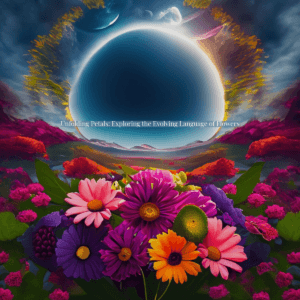
The language of flowers has historically been a nuanced tapestry of symbolism, with various blooms conveying different emotions and messages. As society evolves, so too does the understanding of flower symbolism. Emerging trends reflect contemporary values, with more people gravitating towards unique and personal flower choices that express individuality rather than traditional meanings. For instance, more individuals are breaking away from classic symbols such as roses for love, opting instead for wild or exotic flowers. This shift indicates a growing desire for personalized expressions in floral arrangements, where the significance of flowers is tied more closely to personal experiences rather than established conventions.
Sustainability has also become a critical focus in the floral industry. As customers increasingly prioritize eco-friendly practices, florists are adapting to meet these new demands. This includes sourcing flowers from local growers, using organic farming methods, and opting for biodegradable materials in arrangements. The rise of sustainable floristry influences not only the choices of blooms but also how they are presented, with a notable trend towards minimalism and natural aesthetics that emphasize the beauty of the flowers themselves. By integrating sustainable practices, the floral industry is not only appealing to environmentally conscious consumers but also redefining the messages conveyed through flowers—highlighting a commitment to preserving nature alongside celebrating life’s moments.
Looking ahead, predictions for future floral preferences suggest a continued emphasis on meaningful and sustainable choices. As people seek deeper connections to the environment and a reflection of their values, it’s likely that we will see a rise in native and seasonal flowers being favored for their lower carbon footprints and compatibility with local ecosystems. Additionally, the use of technology in floral design—such as augmented reality applications that can help individuals visualize arrangements—might enhance the personalized experience of choosing flowers, leading to a resurgence in the language of flowers as a form of communication. Overall, the future of flower symbolism seems poised to balance traditional meanings with modern values, fostering a rich dialogue that resonates with both personal and ecological significance.
